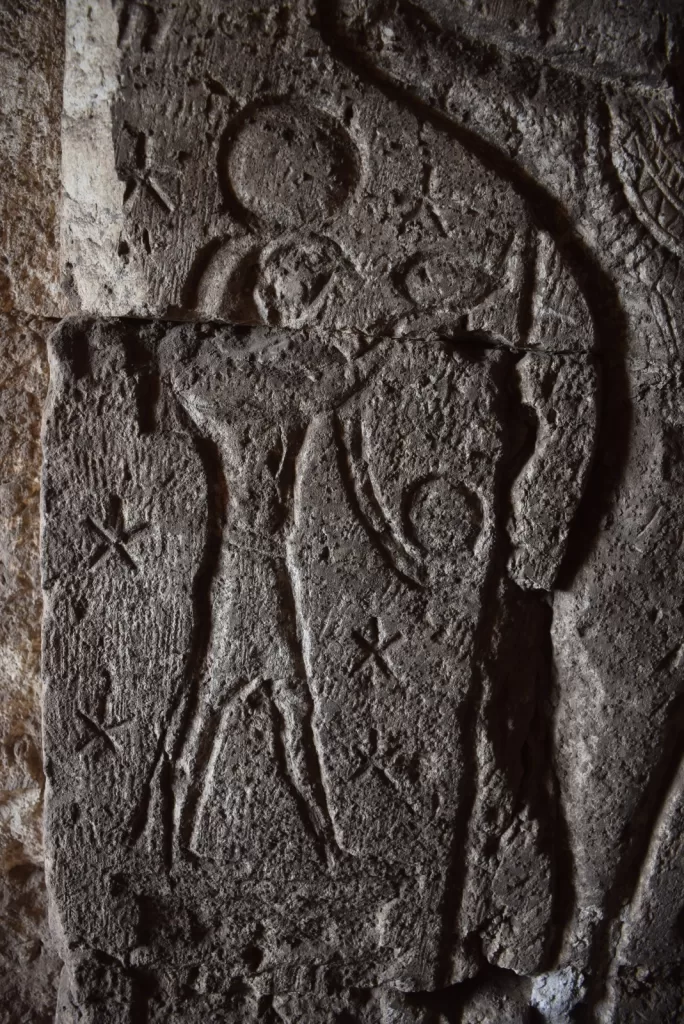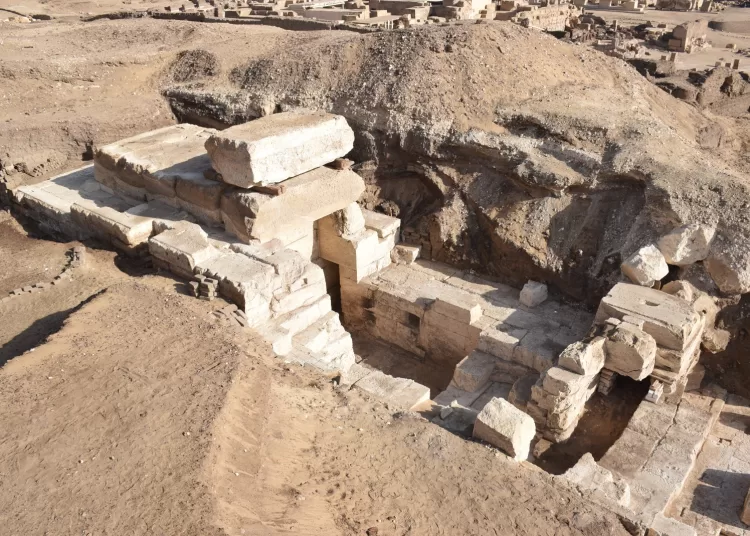In the sun-drenched sands of the Upper Egyptian city of Sohag, a spectacular chapter in the country’s storied past has come to light.
A collaboration between Egypt’s Supreme Council of Antiquities (SCA) and Germany’s University of Tübingen has resulted in a groundbreaking discovery: a Ptolemaic temple that stands as a testament to the grandeur of ancient civilisation, nestled near the Great Temple of Athribis.
This phenomenal find has been hailed as a pivotal unearthing of a previously hidden gem within Athribis.
Mohamed Ismail Khaled, the SCA Secretary-General, shared the marvel of uncovering a magnificent pylon façade that takes one’s breath away with its impressive span of 51 metres and two majestic towers, each standing 24 metres wide.

Reverberating with history, this architectural marvel once rivaled the celebrated pylon of Luxor Temple, reaching an awe-inspiring height of 18 metres.
Hieroglyphics cascade across the stone, revealing the story of a Ptolemaic king in ceremonial communion with the lion-headed goddess Repit and her divine child, Kolanthes.
A closer look at the site uncovers cartouches dating back to the reign of King Ptolemy VIII, hinting at whispers of Queen Cleopatra III’s presence in the inscriptions.

Christian Leitz, the co-leader from Germany, shed light on a southern chamber first glimpsed by the British archaeologist Flinders Petrie a century prior. This room dances with depictions of celestial deities as midnight timekeepers, alongside the majestic Repyt and the deity Min.
Adding to this tapestry of history, a newly discovered room with an ancient staircase was unveiled — a witness to history destroyed around 752 CE.
Markus Müller, the site director, revealed the staircase’s past as a bridge to the temple’s now-lost upper sanctuaries.
For three decades, the excavation team has dedicated their efforts to unravelling the mysteries of Athribis, mapping its grand temple, and unlocking over 30,000 ostraca in Demotic, Coptic, and Hieratic script — a treasure trove of cultural insights.






Discussion about this post